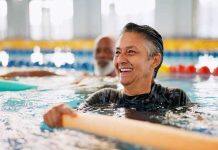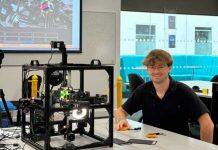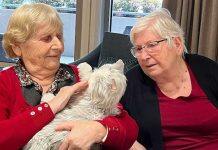Expanded capacity will allow University of Sydney veterinarian staff to provide specialist care for Australian native species.


The University of Sydney has announced its expanded wildlife care facility in Camden in south-western Sydney has been renamed as the Wildlife Health and Conservation Hospital.
The Director of the Wildlife Hospital, Associate Professor Annabelle Olsson, said: “The recent $4.5 million grant from the NSW Government helps us to maintain a singular focus on Australian native wildlife, including koalas, which deserve the best available care backed by our research.”
The expansion of the facility will cater for the creation of outdoor enclosures for koalas and will support additional staffing at the hospital.


The facility has been operating since 2007 and previously treated exotic species and other pets to support the wildlife research and care undertaken at the hospital. New funding will allow the hospital to expand and focus on its core purpose – wildlife conservation.
“Our staff will work closely with wildlife carers and rescue organisations to return animals back to their natural habitat after they recover,” Associate Professor Olsson said.


Dean and Head of School of the Sydney School of Veterinary Science, Professor Jacqui Norris, said: “The new hospital name and wildlife-only approach is critical in signalling to veterinarians in training and the community, that veterinary treatment of our native wildlife and protection of their habitat are of utmost importance.”
This year, the wildlife hospital has treated more than 600 animals, primarily mammals, followed by native birds and reptiles. The number of patients continues to rise steadily as the hospital works with the public, wildlife rescue groups, and carers.
Associate Professor Olsson said: “While the hospital treats all native wildlife, most cases have involved injured and sick koalas and wombats, with possums and flying foxes also often seen.
“Nearly 100 different species of native birds have been seen, including emus, waterbirds, waders, seagulls, parrots, cockatoos, and finches. The reptiles treated range from turtles and blue-tongue lizards to bearded dragons, diamond pythons, and venomous snakes such as browns and blacks.”
With summer storms approaching, the hospital anticipates an influx of up to 10 long-neck turtles a week, typically hit by cars while migrating between winter ponds and breeding grounds.


ABOUT the Wildlife Health and Conservation Hospital
The Wildlife Health and Conservation Hospital (WHCH) is a dedicated wildlife and teaching hospital. We provide expert veterinary care and rehabilitation to sick, injured and orphaned wildlife, aiming to release them back into their natural habitats. Our goals are to alleviate suffering, promote improved standards of care, enhance our understanding of wildlife health threats, and collaborate closely with our community to address these issues.
The hospital is supported by a dedicated team of three wildlife-trained veterinary nurses, three veterinarians, led by Hospital Director, Associate Professor Annabelle Olsson.
Associate Professor Olsson holds advanced qualifications in wildlife and avian medicine (MANZCVS), two higher research degrees focused on the health and welfare of both wild and captive wildlife, a Cert IV in zookeeping, and brings decades of clinical expertise in wildlife medicine and husbandry.
The hospital is also staffed by Associate Professor Michelle Campbell-Ward, a wildlife, zoo and exotic species veterinarian, researcher and leader with interests in animal welfare, ethics and zoological medicine. Her novel work on the outcomes of wildlife rescue efforts in bushfires and other disasters have contributed to improving rehabilitation practices and guidelines.






































